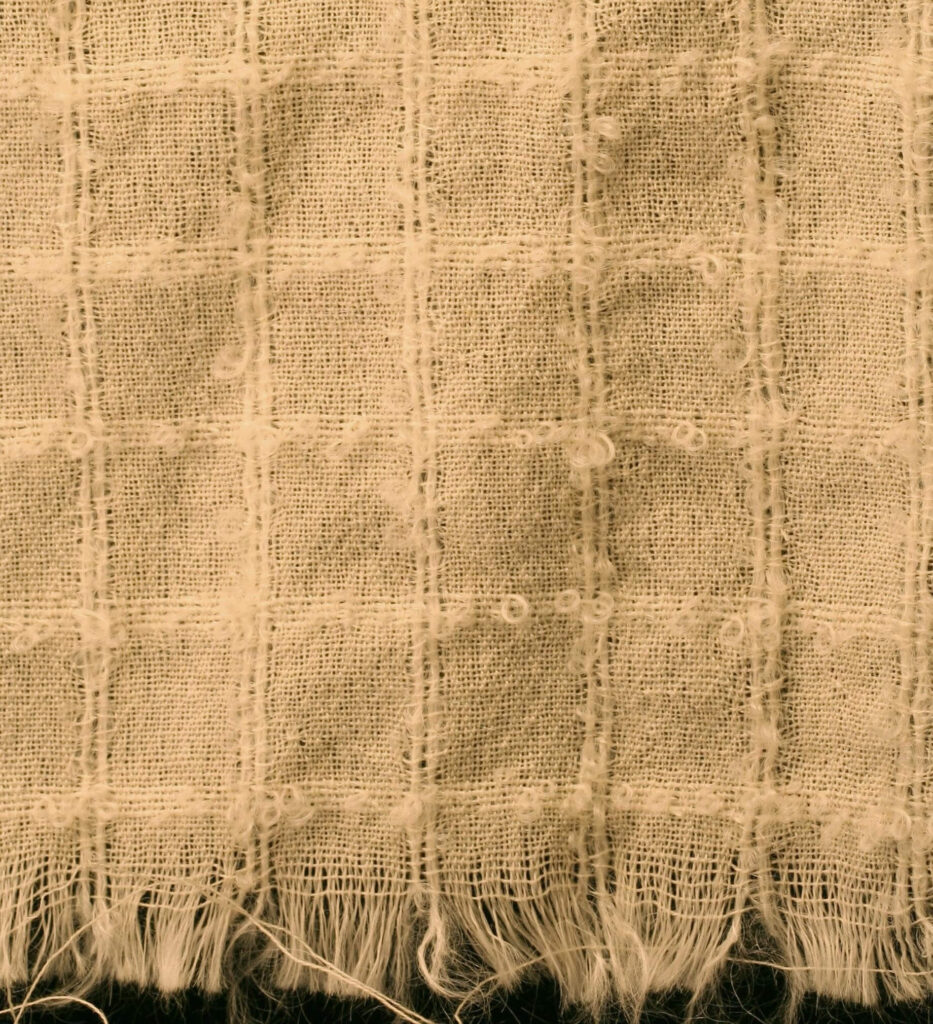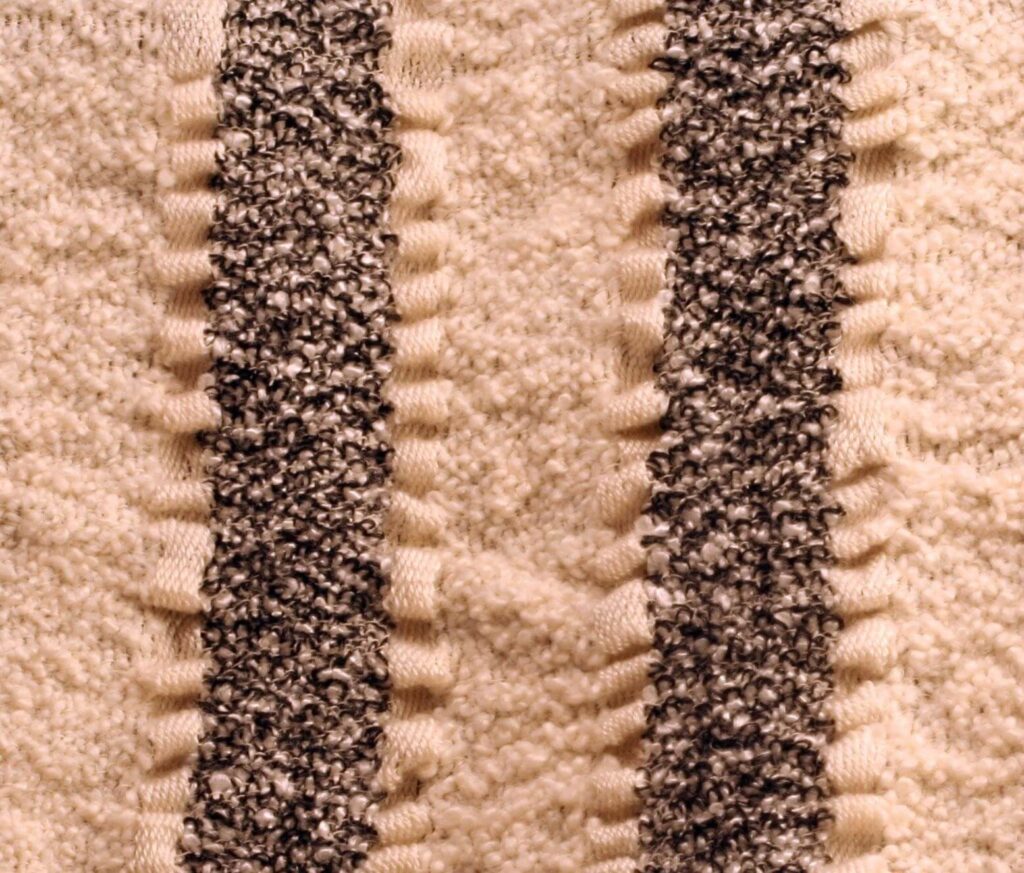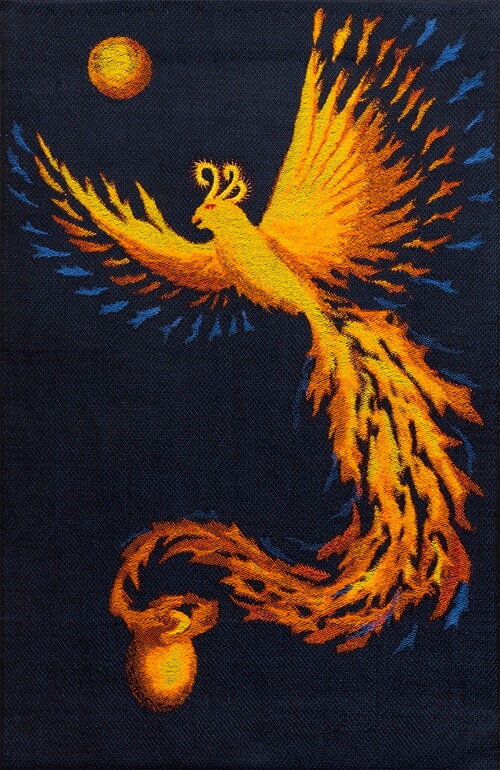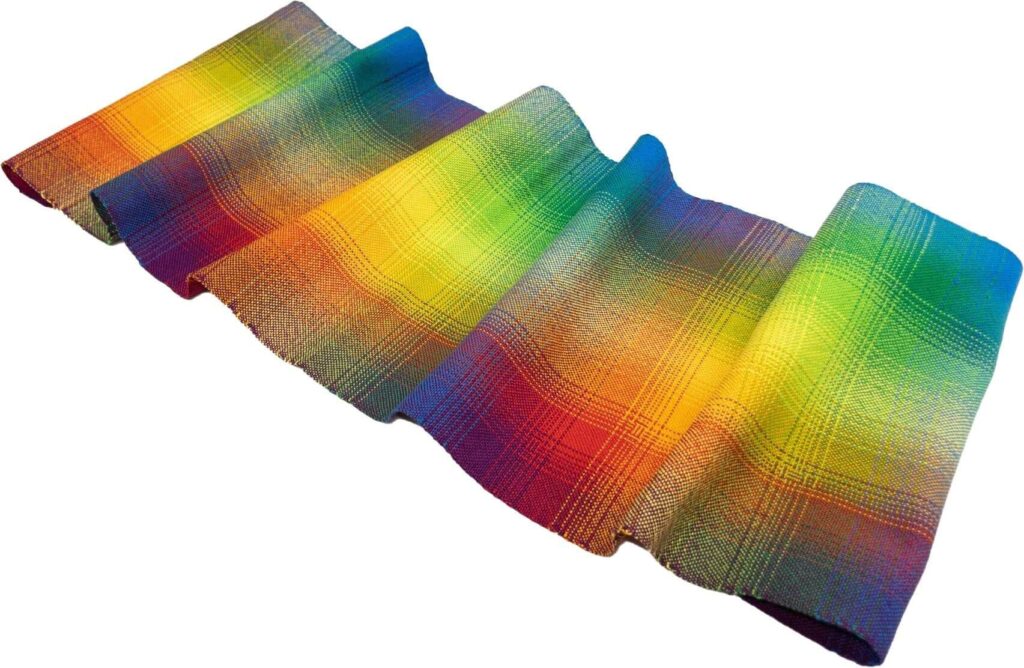Once upon a time, I was under the illusion that more shafts are always better. Because on a loom with eight shafts, you can weave four-shaft designs as well as eight-shaft ones, so you get more design freedom.
But why stop there? On a 16-shaft loom, you can weave four, eight, and twelve-shaft designs (not to mention seven and fifteen-shaft designs), and on 40 shafts, well…..!
So more shafts are always better than fewer, right?
This led to a series of rather expensive purchases. I started with an 8-shaft loom, then upgraded to 16, then to 24, and then to 40 shafts. In the end I bought a jacquard loom, which lets you control every thread individually.
Finally, I was free from shaft-related design constraints! I had achieved weaving Nirvana!
…well, almost.
It took me years to realize this, but the equipment I had bought to get “total design freedom” was actually limiting my thinking. Instead of exploring the full range of possibilities, I felt each of my designs had to use all the capabilities of the fancy equipment. Plain weave has so many possibilities, but I couldn’t possibly weave plain weave. You could do that on the simplest of looms – why waste a multi-shaft or jacquard loom on plain weave?
That thinking closed off a lot of avenues of exploration. Plain weave is so fascinating! Color, texture, collapse weave – endless possibilities, many of them best done in plain weave.


When all you have is a multishaft loom, everything has a tendency to look like shaft-hungry structures. If that’s what interests you, great! You could spend many lifetimes exploring and never run out of possibilities.
But if you feel like you have to justify your expensive purchase with every project, it can constrain your creative freedom, too.
Don’t get me wrong – I loved exploring what I could do with a multishaft loom, and I love weaving on my jacquard loom, too. Like any other piece of equipment, these looms have their unique capabilities. For my structural explorations, and for woven imagery, they are perfect.

But it wasn’t until I started my color experiments, restricting myself to the simplest of structures – plain weave and four-shaft straight twills – that I came to appreciate the potential in fewer shafts and simpler structures. By deliberately limiting myself to drafts with a minimum of patterning, I could play more freely with color. No worries about messing up the pattern in a complicated draft – just play with stripes and different color palettes.
Could I have done that on my 24-shaft loom? Certainly. But would I really have threaded up a 24-shaft loom with plain weave or 3-1 straight twill, and experimented with it for warps on end? Probably not. In this case, the limiting factor wasn’t my equipment, but how the equipment shaped my thinking.
I’ve since spent many hours exploring color on four and eight shafts. I’m loving the freedom of playing with designs that don’t require a bazillion shafts. There are infinite avenues for exploration in weaving. I could explore color on just four shafts forever – heck, I could explore color in plain weave forever!

And I’m finding that working within tighter structural constraints doesn’t limit my creativity. It actually sparks it. Working under design constraints, whether equipment, materials, or something else, encourages me to think more deeply about my design goals, and challenges me to solve problems more creatively.
I still enjoy designing for multishaft and jacquard looms. But I don’t believe that “more shafts are always better” any more. Because it’s easy for your equipment to influence your thinking, and if it does, you can miss some fascinating explorations (and beautiful projects!) in the weaving world.
So when you’re thinking about that next loom, don’t automatically go for more shafts. Instead, think about what you like to explore, and what design constraints invigorate (or frustrate!) you. Then, choose the loom that will work best for YOU.


